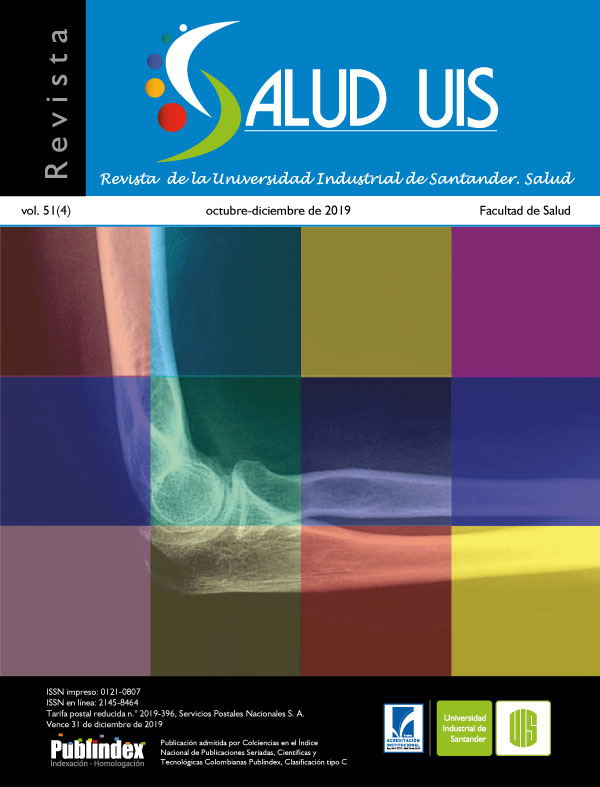Abstract
Introduction: There is a higher occurrence of injuries on the first working days of the week, and between 13:00 and 17:00 hours. An association between some special dates and changes in the occurrence of deaths or diseases have been described in different countries and regions. Our hypothesis was that completing contractual obligations with a company may become triggers that increase the occurrence of occupational injuries. Methods: We analyzed injury records and consolidated monthly payroll reports (from January 2012 to September 2013) for personnel operations who worked in companies that were involved in a megaproject to build a road in Colombia. This analysis reports a possible association between dates of financially important contractual milestones and a higher occurrence of occupational injuries. One-tailed binomial tests were used to compare the occurrence of injuries one and two months before and one month after four deadlines, corresponding to 14, 3, 1 and 1% of the overall budget, respectively. Results: The highest occurrence of injuries was observed during the month before the deadline corresponding to 14% of the budget (p=0.07). Discussion: Contractual milestones could act as distal determinant whereas human errors are proximal determinants of injuries.
References
2. Brogmus GE. Day of the week lost time occupational injury trends in the US by gender and industry and their implications for work scheduling. Ergonomics. 2007; 50: 446-474. doi: https://doi. org/10.1080/00140130601133826.
3. Amiri M, Ardeshir A, Fazel Zarandi MH. Riskbased analysis of construction accidents in Iran during 2007-2011-meta analyze study. Iran J Public Health. 2014; 43: 507-522.
4. Shao B, Hu Z, Liu Q, Chen S, He W. Fatal accident patterns of building construction activities in China. Saf Sci. 2019; 112: 130-141. doi: http://10.1016/j.ssci.2018.07.019.
5. Camino López MA, Fontaneda I, González Alcántara OJ, Ritzel DO. The special severity of occupational accidents in the afternoon: “The lunch effect”. Accid Anal Prev 2011; 43: 1104-1116. doi: https://doi.org/10.1016/j. aap.2010.12.019.
6. Eliason M, Ohlson H. Living to save taxes. Econ Lett. 2008; 100: 340-343. doi: http://10.1016/j. econlet.2008.02.034.
7. Shimizu M, Pelham B. Postponing a date with the grim reaper: ceremonial events and mortality. Basic Appl Soc Psychol. 2008; 30: 36-45.
8. Yang CH, Huang YT, Janes C, Lin KC, Lu TH. Belief in ghost month can help prevent drowning deaths: a natural experiment on the effects of cultural beliefs on risky behaviours. Soc Sci Med. 2008; 66: 1990- 1998. doi: 10.1016/j.socscimed.2008.01.014.
9. Wilches-Gutiérrez JL, Arenas-Monsalve LM, Paulo- Maya A, Peláez-Ballestas I, Idrovo AJ. A “beautiful death”: Mortality, death and holidays in a Mexican municipality. Soc Sci Med. 2012; 74(5): 775-782. doi: 10.1016/j.socscimed.2011.11.018.
10. Wilbert-Lampen U, Leistner D, Greven S, Pohl T, Sper S, Völker C, et al. Cardiovascular events during World Cup soccer. N Engl J Med. 2008; 358: 475-483. doi: 10.1056/NEJMoa0707427.
11. Lloyd B, Matthews S, Livingston M, Jayasekara H, Smith K. Alcohol intoxication in the context of major public holidays, sporting and social events: a time-series analysis in Melbourne, Australia, 2000- 2009. Addiction 2013; 108: 701-709. doi: 10.1111/ add.12041.
12. Fernández-Niño JA, Astudillo-García CI, Bojorquez- Chapela I, Morales-Carmona E, Montoya-Rodriguez AA, Palacio-Mejia LS. The Mexican cycle of suicide: a national analysis of seasonality, 2000-2013. PLoS One. 2016; 11(1): e0146495. doi: 10.1371/journal. pone.0146495.
13. Leach LP. Critical chain project management improves project performance. Proj Manag J.
1999; 30: 39-51. doi: https://doi.org/10.1177/
875697289903000207.
14. Ariely D, Wertenbroch K. Procrastination, deadlines, and performance: self-control by precommitment. Psychol Sci. 2002; 13: 219-224. doi: https://doi. org/10.1111/1467-9280.00441.
15. Wahrendorf M, Siegrist J. Proximal and distal determinants of stressful work: framework and analysis of retrospective European data. BMC Public Health. 2014; 14: 849.
Se autoriza la reproducción total o parcial de la obra para fines educativos, siempre y cuando se cite la fuente.
Esta obra está bajo una Licencia Creative Commons Atribución 4.0 Pública Internacional.
